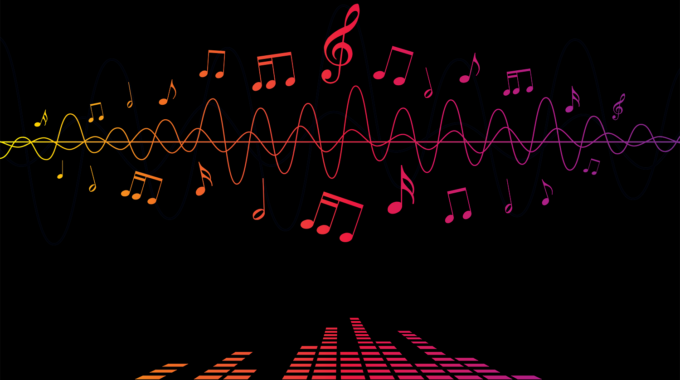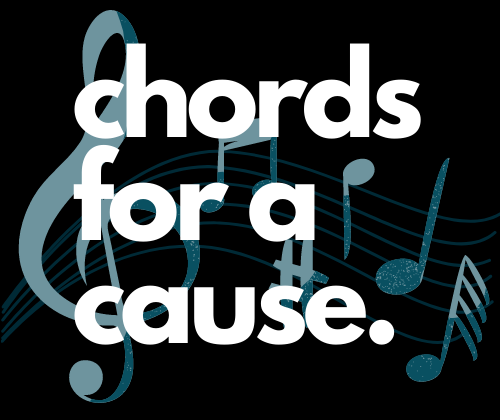Binaural Beats: What Are They and How Can We Use Them?


The beginning of school is pulling up, and I know many people struggle with getting back to being focused and productive when working on their schoolwork as well as reducing their anxiety and stress. A form of therapy called binaural beats entered the market a few years ago and has been advertised as a way to release stress, increase creativity, and strengthen focus. Are they as good as they seem? And as students, will they magically solve our problems like people say they do?
Binaural beats are used to alter the frequency of our brainwaves. But what exactly are brainwaves? To be honest, they sound like something from a sci-fi movie. But they are very much real. Neurons in our brains use electricity to send signals. We can actually measure and graph the frequency of these signals using an electroencephalogram (EEG). Using this, we are able to generate a “brainwave pattern,” It is called this because of its periodic, wave-like characteristics. Our brainwave profile is linked to our emotional and neuro-physical health. There are different types of brainwaves, and they are all associated with different mental states.
- Delta Pattern (.5-4 Hz): Most often generated in deepest meditation and dreamless sleep. It has been found that healing and regeneration happen most in this state because the human growth hormone is released.
- Theta Pattern (4-7 Hz): Usually our dreaming sleep state. With this pattern, we are creative and experience vivid imagery. These are hard to experience when we are awake because it is only produced when we are sleeping or about to go to sleep. Ever remembered weirdly detailed memories right when you’re about to fall asleep? This brainwave is why.
- Alpha Pattern (7-13 Hz): In this pattern, we experience more of a relaxed state, in which we feel calm and observant. This is typically our brain’s resting state. This pattern is associated with serotonin production, which is why we often feel very good after meditating because it allows for the production of these waves.
- Beta Pattern (13-30 Hz): These types of waves are what we feel on a normal basis. It is used for focused tasks and decision making. Continual use of this mental pattern is difficult because it takes a lot of energy.
- Gamma Pattern (30-50 Hz): This is the most active brainwave, and is associated with high alertness. It is one of the least common and is hard for the mind to generate.
When we take the action to calm down and relax, our brain follows. We can change the pattern by doing things like meditating to reduce the frequency, or exercising to increase the frequency. But these often take time and energy. So is there a way to achieve these same results in a faster way? This is where binaural beats come in. Advocates for them say that listening to them for even a few minutes can change the frequency of our brainwaves.
So how do these binaural beats actually work? Binaural means relating to both ears. When we play two waves with different frequencies into each ear, they travel separately to the part of the brain that gathers auditory input. These two tones are then processed together, as a “beat” at a new frequency. This new frequency is different from that of the human hearing range, which is why it has to be created by the beat instead of just played. When listening to these continuous beats, it is said that the brain syncs with the pattern that has been produced.


A recent study (Jirakittayakorn 2015) found that the EEG patterns of people listening to binaural beats were different from their normal patterns. Unfortunately, researchers were unable to find proof that these effects were positive or that they were the outcome that is advertised. Binaural beats have been shown to reduce anxiety. While we do not have evidence from EEGs or brain scans, it has been shown through observational research (Le Scouarnec 2001) that patients, after listening to binaural beats at certain frequencies, had reduced anxiety levels.
So now the real question: How can we use these? Firstly, they have not been scientifically proven to cause benefits. Do not pay for a service that offers these, because you can’t be certain that you will actually experience results. Luckily, there are several services like Spotify, Youtube, and more that allow you to stream audio tracks of binaural beats. The best thing about them is that they are non-invasive and free on many platforms. You lose nothing from trying them, so go ahead. Listen to them when studying for better concentration, when trying to sleep, to release tension and stress, or any other time. There are so many benefits. One quick tip: try not to listen to them when driving. Some frequencies are said to make you so calm and relaxed that you may fall asleep at the wheel.
Happy studying! Don’t procrastinate, do your homework, drink water. You know the drill.
Works Cited
[1] “Binaural Beats Therapy: Benefits and How They Work.” Medical News Today, MediLexicon International, http://www.medicalnewstoday.com/articles/320019.
[2] Booth, Stephanie. “Brain Health With Binaural Beats.” Healthline, Healthline Media, 14 May 2019, http://www.healthline.com/health-news/your-brain-on-binaural-beats.
[3] Global, CSU. “Increasing Cognitive Function With Binaural Beats.” The Official Blog of CSU Global, The Official Blog of CSU Global, 1 Apr. 2020, csuglobal.edu/blog/increasing-cognitive-function-with-binaural-beats.
[4] Greenfield, Ben, and Ben Greenfield. “How Sound Affects Your Brain.” Ben Greenfield Fitness – Diet, Fat Loss and Performance Advice, 14 June 2018, bengreenfieldfitness.com/podcast/brain-podcasts/how-you-can-use-sound-and-music-to-change-your-brain-waves-with-laser-accuracy-and-achieve-huge-focus-and-performance-gains/.
[5] Jirakittayakorn, Nantawachara, and Yodchanan Wongsawat. “The Brain Responses to Different Frequencies of Binaural Beat Sounds on QEEG at Cortical Level.” Conference Proceedings : … Annual International Conference of the IEEE Engineering in Medicine and Biology Society. IEEE Engineering in Medicine and Biology Society. Annual Conference, U.S. National Library of Medicine, 2015, http://www.ncbi.nlm.nih.gov/pubmed/26737340.
[6] Le Scouarnec RP;Poirier RM;Owens JE;Gauthier J;Taylor AG;Foresman PA; “Use of Binaural Beat Tapes for Treatment of Anxiety: A Pilot Study of Tape Preference and Outcomes.” Alternative Therapies in Health and Medicine, U.S. National Library of Medicine, pubmed.ncbi.nlm.nih.gov/11191043/.

